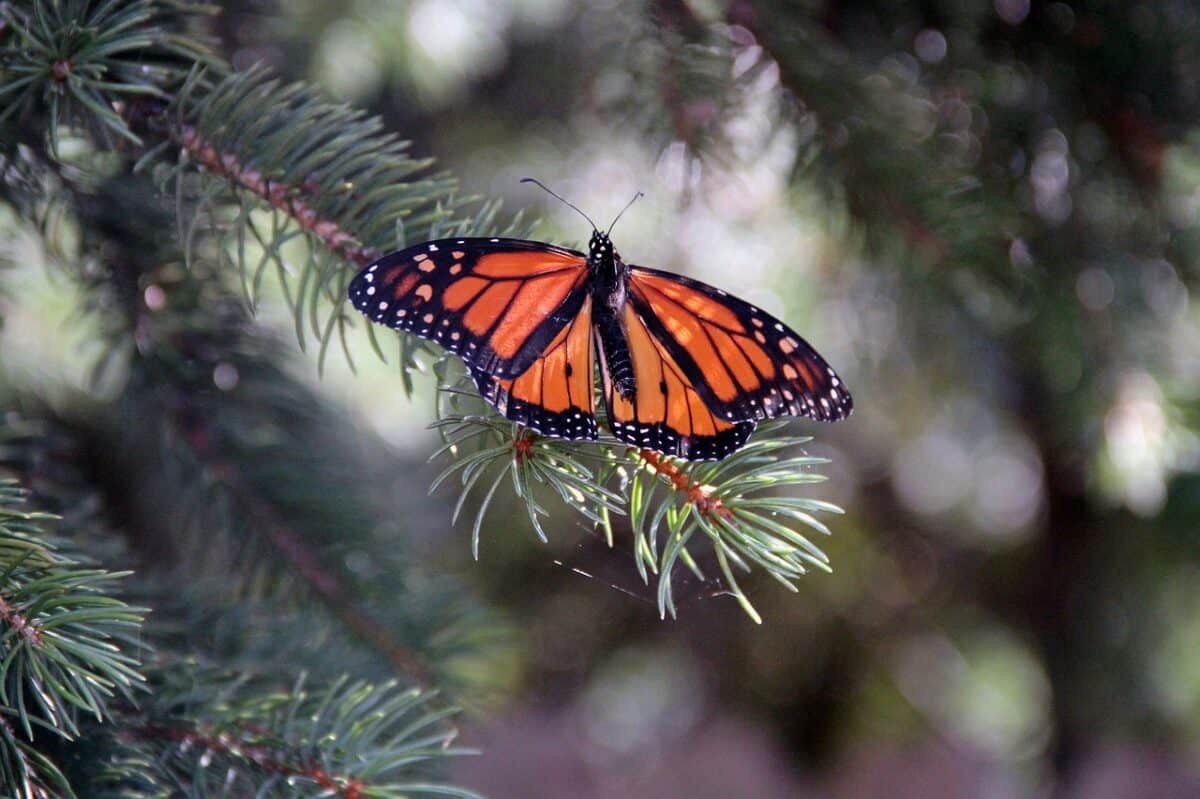The monarch butterfly migration is one of nature’s most spectacular phenomena, as millions of these delicate orange and black insects journey thousands of miles between their summer breeding grounds and winter sanctuaries. While popular viewing destinations like Mexico’s Monarch Butterfly Biosphere Reserve draw crowds of tourists, numerous lesser-known locations offer equally magical experiences with fewer visitors. These hidden gems provide intimate encounters with these remarkable travelers as they navigate their epic journey. From secluded coastal pathways to overlooked inland sanctuaries, these spots offer wildlife enthusiasts a chance to witness one of the animal kingdom’s most extraordinary migrations in peaceful settings that enhance the wonder of the experience.
Understanding the Monarch Migration Phenomenon
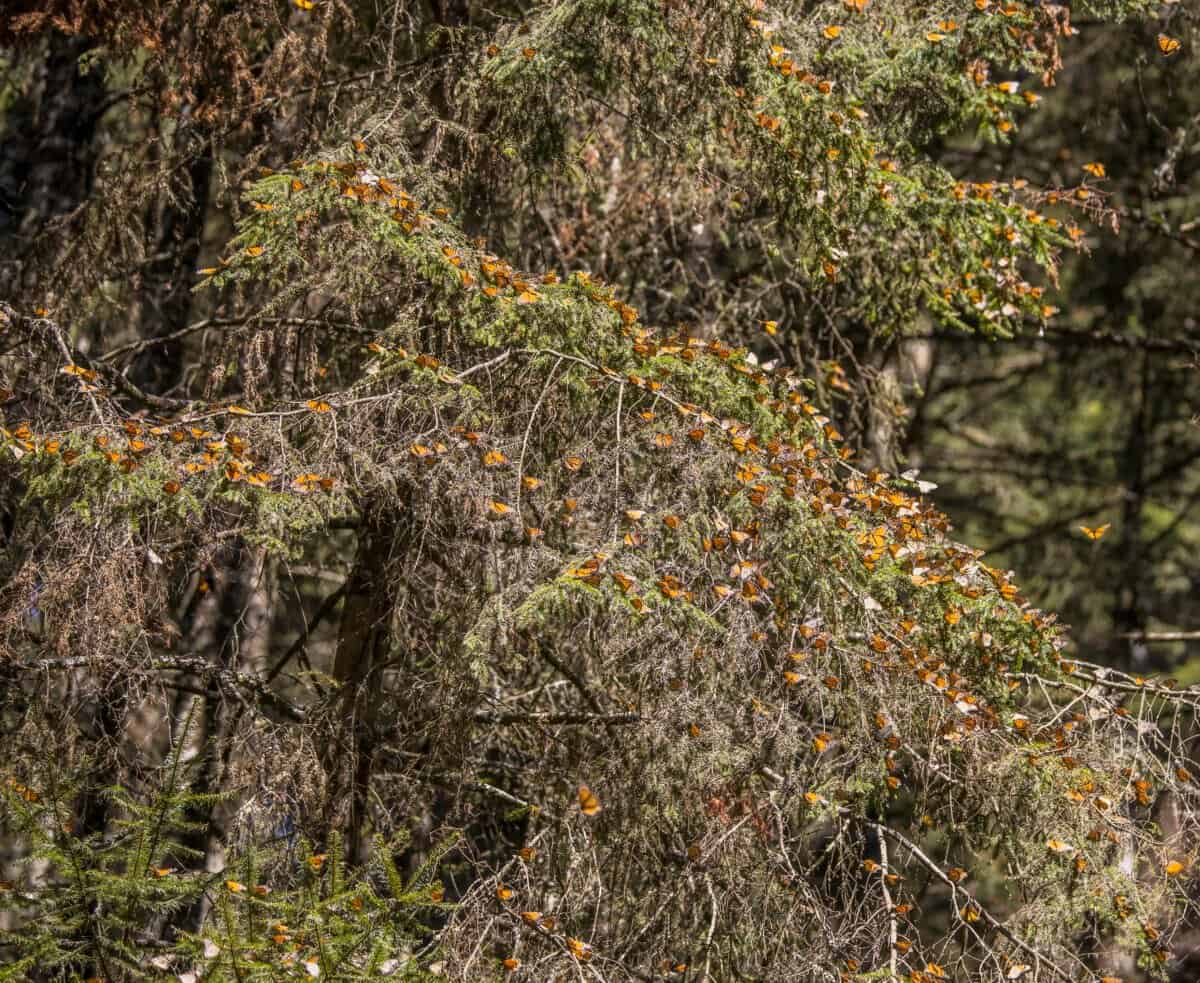
The monarch butterfly (Danaus plexippus) undertakes one of the longest insect migrations on Earth, traveling up to 3,000 miles from Canada and the northern United States to central Mexico and coastal California. Unlike birds, individual monarchs don’t complete the round trip—it takes three to four generations to complete the annual cycle. The final generation of summer is special, living up to eight months compared to the typical six-week lifespan of earlier generations. These “Methuselah” butterflies enter a reproductive diapause, saving energy for the long journey south.
What makes this migration even more remarkable is that these butterflies navigate with incredible precision despite never having made the journey before. Scientists believe they use a combination of the sun’s position, Earth’s magnetic field, and possibly celestial cues to find their way. The monarchs’ migration is driven by environmental cues like decreasing daylight hours, cooling temperatures, and aging milkweed plants, signaling it’s time to begin their journey to overwintering sites where they’ll cluster together by the thousands on specific trees for warmth and protection.
Point Pelee National Park, Ontario, Canada

At the southernmost point of mainland Canada lies Point Pelee National Park, a peninsula that juts into Lake Erie creating a natural funnel for migrating monarchs. In late August through mid-September, monarchs gather here in preparation for crossing the lake—one of the most challenging segments of their journey. The park’s unique geography makes it an ideal launching point, as the butterflies instinctively understand they need to cross at the narrowest section of the lake to conserve energy.
For the best viewing experience, head to the park’s tip early in the morning when monarchs who roosted overnight prepare for departure. Patient visitors might witness the breathtaking sight of hundreds of butterflies simultaneously taking flight across the water. The Woodland Nature Trail and the Marsh Boardwalk offer excellent vantage points away from the more crowded Tip area. Park staff often conduct monarch tagging demonstrations, providing an educational dimension to your visit while contributing to migration research efforts.
Cape May Point State Park, New Jersey

Cape May Point, situated at New Jersey’s southernmost tip, serves as a crucial stopover point for monarchs heading south along the Atlantic coast. Here, monarchs gather in September and October, preparing to cross Delaware Bay. The park’s location creates a bottleneck effect, concentrating butterflies in this area before they continue their journey. The Cape May Monarch Monitoring Project has been tracking monarch populations here since 1990, making it one of the longest-running monarch research sites in North America.
For optimal viewing, explore the park’s dune and meadow trails where native wildflowers attract feeding monarchs. While the park’s lighthouse area receives the most visitors, the less-traveled western trails often host larger concentrations of butterflies, especially on calm, sunny afternoons. The nearby South Cape May Meadows, managed by The Nature Conservancy, offers additional butterfly habitat with fewer visitors. Time your visit for days following cold fronts when migrants often arrive in larger numbers, creating spectacular viewing opportunities as they feed voraciously to refuel.
St. Marks National Wildlife Refuge, Florida
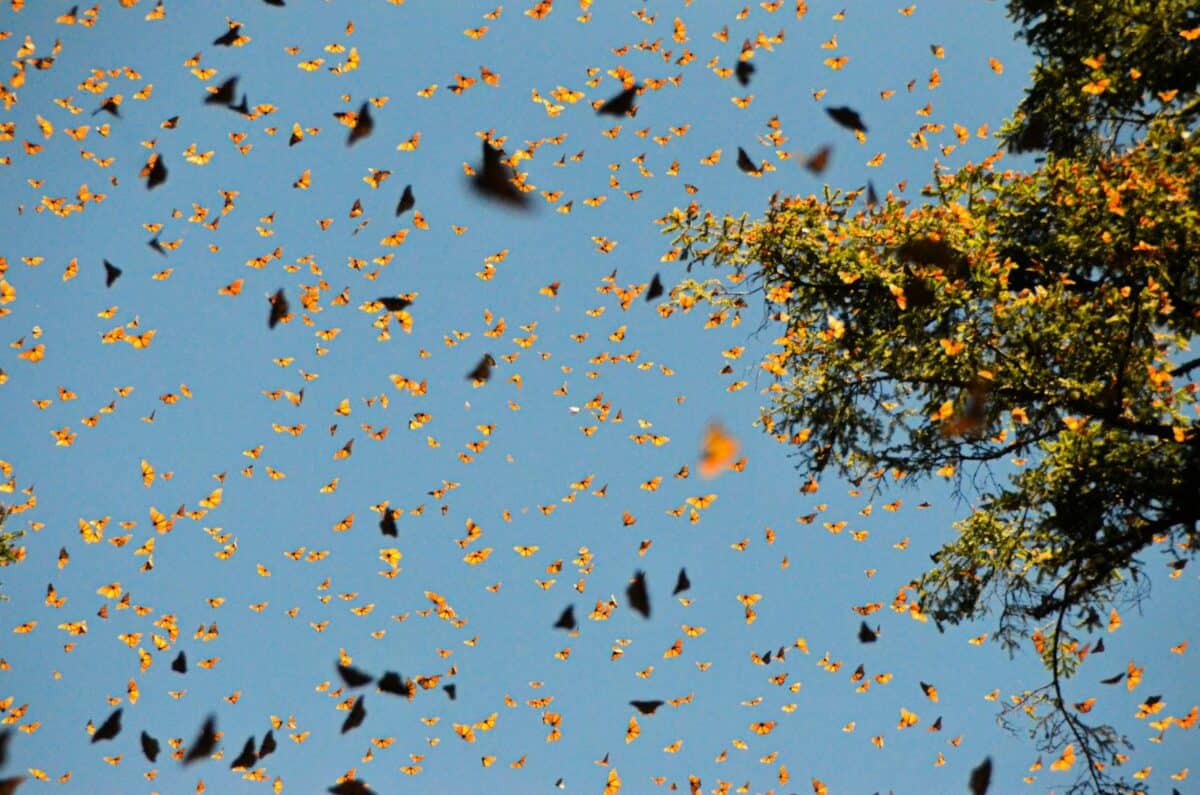
Along Florida’s Gulf Coast, St. Marks National Wildlife Refuge serves as the last major stopover for monarchs before they make the dangerous gulf crossing to Mexico. By mid-October through early November, thousands of monarchs gather here, creating a spectacle known locally as “orange trees” as they cluster on coastal vegetation. The refuge’s Monarch-Milkweed Initiative has restored native milkweed habitat, making this one of the most reliable viewing areas in the southeastern United States.
The less-visited Tower Pond and Stony Bayou pools areas offer exceptional viewing opportunities away from the more popular lighthouse area. Here, monarchs can be observed feeding on saltbush and goldenrod as they prepare for their gulf crossing. The best viewing times are late afternoons when butterflies begin gathering in roosting formations. The refuge’s annual Monarch Festival, typically held in late October, coincides with peak migration but attracts crowds. For a more secluded experience, visit on weekdays or explore the refuge’s western sections where fewer visitors venture but monarchs are equally abundant.
Cibola National Wildlife Refuge, Arizona
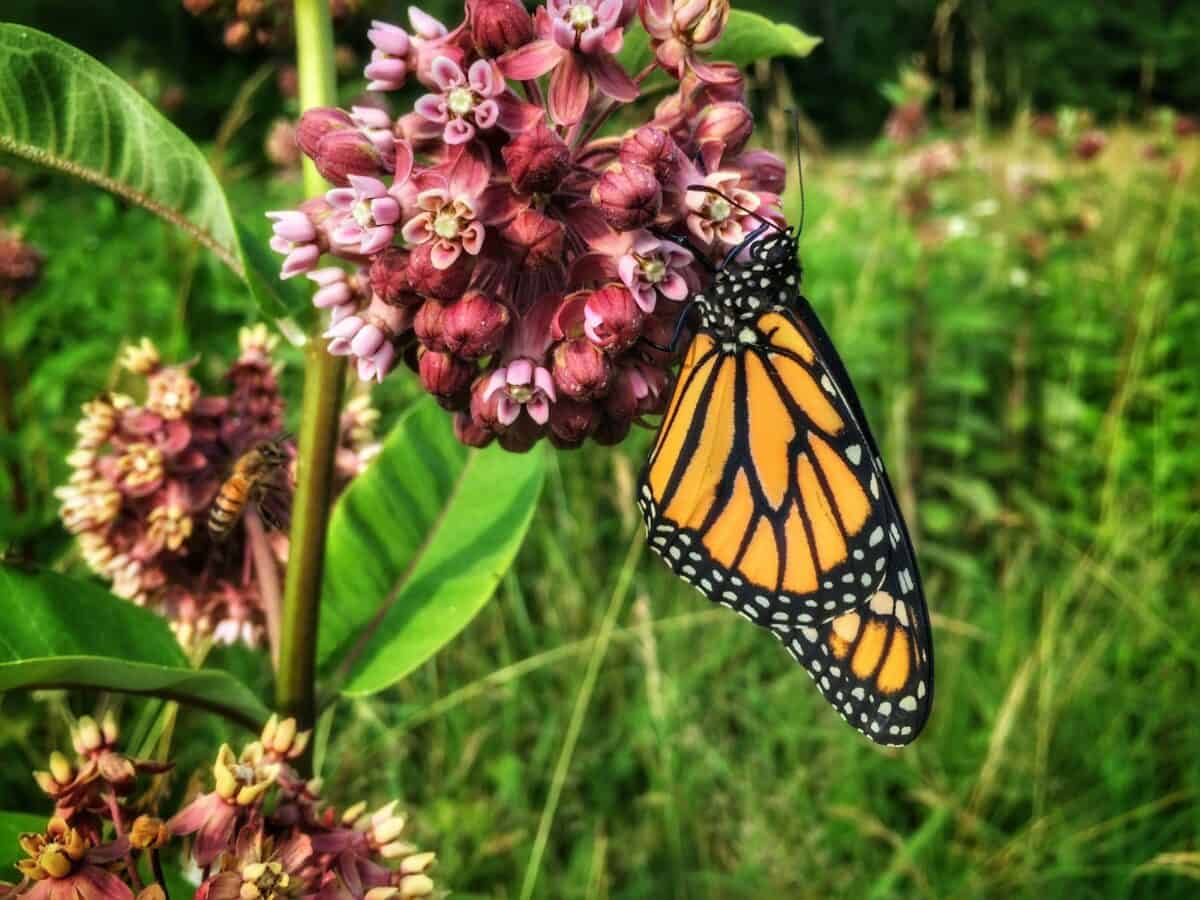
Located along the Colorado River in southwestern Arizona, Cibola National Wildlife Refuge offers a unique opportunity to witness the western monarch migration route. Unlike the more studied eastern population, western monarchs follow different pathways, with many passing through this desert oasis. In late September through October, monarchs can be spotted refueling on flowering plants along the refuge’s riparian areas as they make their way toward California’s coastal overwintering sites.
The refuge’s Farm Unit and Nature Trail provide excellent viewing opportunities with minimal crowds. The contrast of orange wings against the desert landscape creates a striking visual experience rarely highlighted in migration literature. Morning hours are best for viewing as monarchs warm themselves in the sun before continuing their journey. The refuge’s remote location means fewer visitors, allowing for more intimate butterfly encounters. For dedicated butterfly enthusiasts, the nearby Hart Mine Marsh area often hosts good concentrations of monarchs but requires additional hiking to access.
Coastal Trail, San Mateo County, California
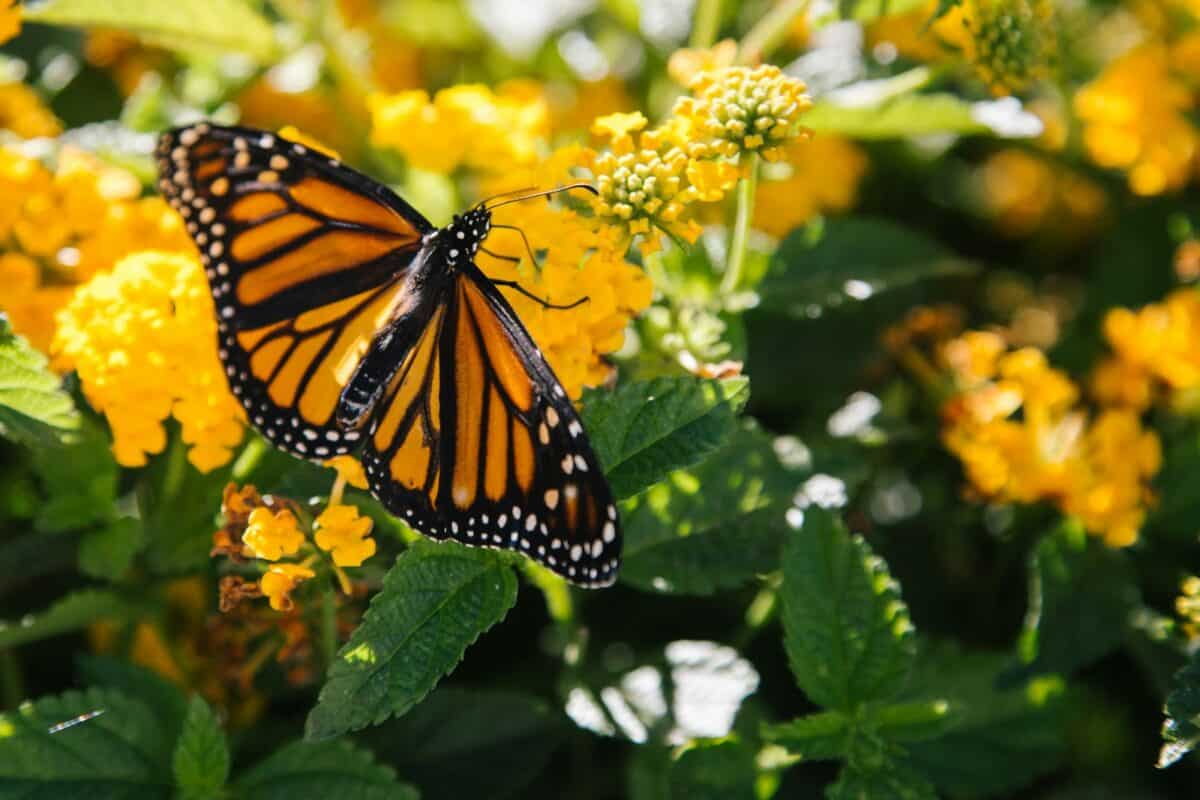
California’s coastal areas host the western monarch population during winter months, with well-known sites like Pacific Grove and Pismo Beach drawing crowds. However, the less-traveled Coastal Trail in San Mateo County offers equally impressive viewing with a fraction of the visitors. Stretching from Pillar Point to the Ritz-Carlton in Half Moon Bay, this trail passes through several small monarch roosting areas where butterflies can be observed from late October through February.
The eucalyptus groves near Miramontes Point Road host modest-sized clusters of overwintering monarchs that often go unnoticed by tourists focusing on larger colonies. Unlike the designated viewing platforms at popular sites, these locations offer more natural and intimate encounters. The best viewing times are mid-morning when the sun has warmed the butterflies enough to become active but before they disperse to feed. During colder days, look up into the eucalyptus trees where monarchs cluster together, their closed wings resembling dead leaves—a remarkable camouflage strategy that conceals thousands of butterflies hiding in plain sight.
Cerro Pelon Sanctuary, Mexico
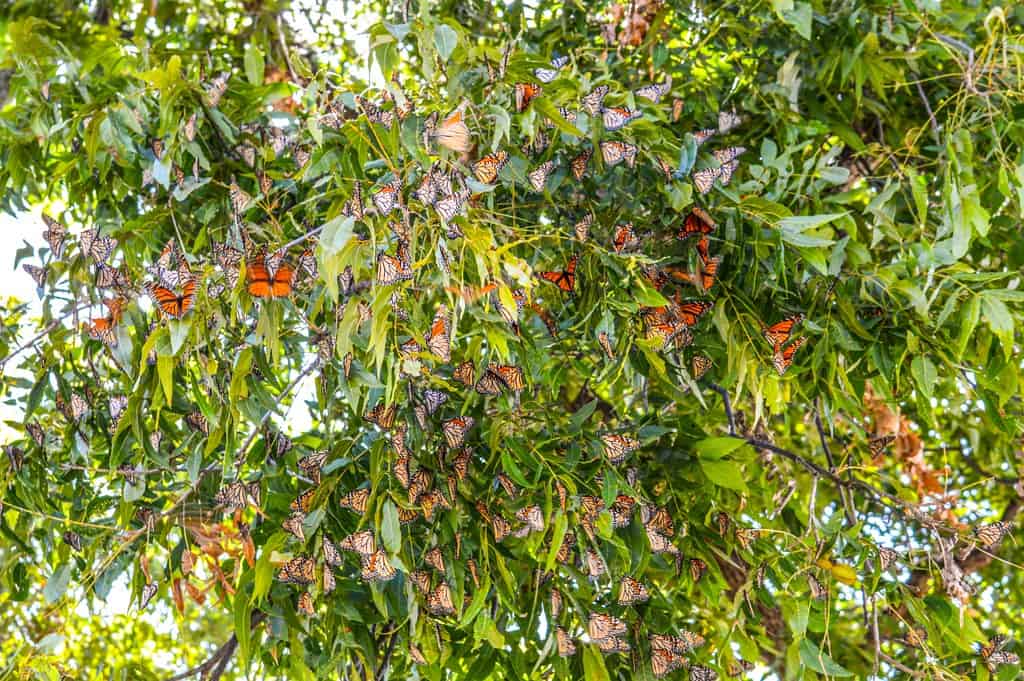
While Mexico’s Monarch Butterfly Biosphere Reserve is famous worldwide, most visitors flock to the easily accessible sanctuaries of El Rosario and Sierra Chincua. In contrast, Cerro Pelon remains relatively uncrowded despite hosting some of the densest monarch concentrations. Located in the state of Mexico, this sanctuary requires a more adventurous approach—either a challenging hike or horseback ride up steep mountain trails—naturally limiting visitor numbers and preserving a more authentic experience.
The journey to Cerro Pelon typically begins in the small town of Macheros, where local guides lead visitors through oak and pine forests to reach the colony. The reward for this effort is witnessing millions of monarchs in a pristine setting, often with only a handful of other visitors present. Unlike the more developed sanctuaries, Cerro Pelon offers minimal infrastructure and maximum immersion in the monarchs’ natural environment. The butterfly density here is so great that the sound of millions of wings creates an audible flutter that resonates through the forest—a sensory experience often missed at busier sites where human voices dominate.
Ventana Wildlife Sanctuary, Big Sur, California

Big Sur’s breathtaking coastline hosts several small monarch overwintering sites that remain relatively unknown to casual tourists. The Andrew Molera State Park section of the Ventana Wildlife Sanctuary contains eucalyptus and Monterey pine groves where modest-sized monarch clusters form from November through February. While not hosting the largest colonies, these sites offer the unparalleled experience of witnessing monarchs against the backdrop of Big Sur’s dramatic ocean vistas.
The moderate 2-mile Ridge Trail loop passes near several monarch roosting areas while attracting far fewer visitors than nearby state parks. For optimal viewing, bring binoculars and visit during mid-day when butterflies are most active, creating flashes of orange among the coastal vegetation. Local conservation efforts by the Ventana Wildlife Society include habitat restoration specifically designed to support monarchs, making this area increasingly important for the threatened western monarch population. Their educational programs occasionally offer guided monarch walks that provide access to areas not normally open to the public.
Aransas National Wildlife Refuge, Texas

The central flyway of the monarch migration passes through Texas, with many butterflies traversing the state en route to Mexico. While popular sites like the National Butterfly Center receive attention, Aransas National Wildlife Refuge on the Gulf Coast offers excellent monarch viewing with significantly fewer visitors. In October, monarchs funnel through this area before making their final push to Mexico, creating concentrated feeding opportunities on the refuge’s flowering plants.
The refuge’s Heron Flats Trail and Jones Lake Loop provide ideal monarch habitat with minimal crowds, particularly on weekdays. Unlike dedicated butterfly centers, Aransas primarily attracts birders seeking whooping cranes, leaving the monarch spectacle relatively undisturbed. The intersection of multiple migration pathways—avian and lepidopteran—creates a unique wildlife viewing opportunity. For the most rewarding experience, visit during mid-morning when monarchs actively feed on flowering bushes along the refuge’s trails and roadsides before continuing their southward journey.
Balcones Canyonlands National Wildlife Refuge, Texas

Located in the Texas Hill Country northwest of Austin, Balcones Canyonlands National Wildlife Refuge serves as a crucial waypoint for monarchs traveling the central flyway. The refuge’s Shin Oak observation deck area contains restored prairie habitat with native wildflowers that attract substantial monarch numbers during fall migration from late September through October. Being primarily managed for endangered bird species, the butterfly viewing opportunities here remain a hidden treasure known mainly to local naturalists.
The refuge’s Doeskin Ranch Public Use Area offers additional viewing opportunities along the Creek Trail, where monarchs often congregate near water sources during dry periods. The hilly terrain creates protected valleys where butterflies can feed and rest sheltered from strong winds that might otherwise impede their journey. For dedicated butterfly enthusiasts, the refuge occasionally permits access to research areas normally closed to the public during special monarch-focused events. These provide unique opportunities to witness tagging operations and contribute to citizen science efforts tracking the migration.
Tallgrass Prairie National Preserve, Kansas

The vast prairies of central Kansas serve as critical breeding and migration habitat for monarchs, yet receive far less attention than coastal migration routes. Tallgrass Prairie National Preserve protects one of the last remaining expanses of tallgrass prairie ecosystem, providing essential milkweed for breeding monarchs in summer and abundant nectar sources during fall migration. From late August through September, the preserve’s rolling hills host steady streams of monarchs moving southward.
The preserve’s Southwind Nature Trail offers excellent butterfly viewing opportunities away from the more visited historic ranch buildings area. Here, monarchs can be observed nectaring on compass plants, blazing stars, and other native prairie flowers—a glimpse of what the great migration must have looked like when these grasslands stretched across the continent. Morning visits are recommended when butterflies are actively feeding before the afternoon heat prompts them to seek shelter. The preserve’s vast open landscapes allow visitors to track monarchs visually for extended distances as they navigate the prairie—a perspective impossible to experience at woodland or coastal viewing sites.
Neal Smith National Wildlife Refuge, Iowa
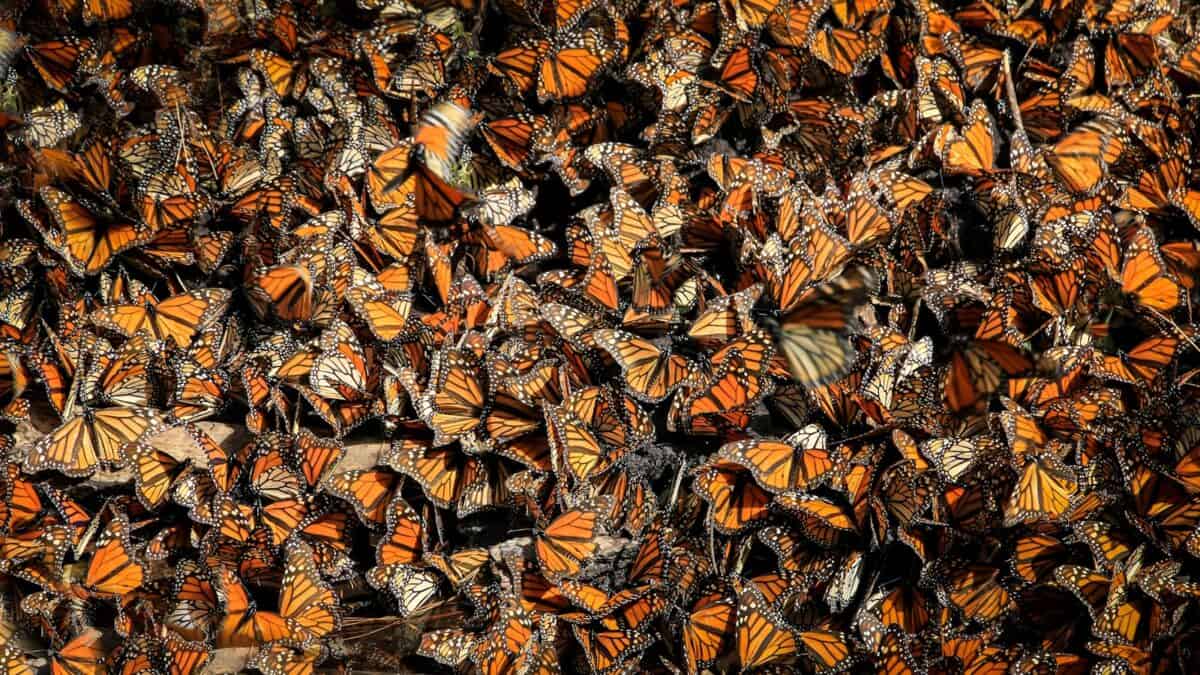
Central Iowa might seem an unlikely butterfly destination, but Neal Smith National Wildlife Refuge has become a monarch hotspot thanks to extensive prairie restoration efforts. The refuge has reestablished over 8,000 acres of native tallgrass prairie, including numerous milkweed species that support breeding monarchs in summer and flowering plants that fuel migrating butterflies in fall. From mid-August through September, the refuge serves as both a nursery for the final generation of monarchs and a migration corridor.
The refuge’s Prairie Learning Center provides educational context, but the real magic happens on the less-traveled Prairie Overlook Trail where visitors can observe monarchs in restored habitat that closely resembles their original evolutionary environment. Early morning visits offer opportunities to find roosting monarchs in prairie grasses before they warm up and continue their journey. The refuge’s annual Prairie Awakening celebration in September coincides with peak migration and includes monarch tagging demonstrations, though for quieter observation, weekday visits are recommended. The panoramic views from the observation platform allow visitors to spot distant orange specks moving purposefully southward—a humbling reminder of the migration’s scale across the continent.
Experiencing the Magic: Tips for Responsible Monarch Viewing

Witnessing the monarch migration is a privilege that comes with responsibility. When visiting these hidden gems, it’s essential to practice minimal impact principles to protect these vulnerable insects. Stay on designated trails to avoid disturbing roosting monarchs or damaging host plants. Observe butterflies from a respectful distance—close enough to appreciate their beauty but far enough to prevent disrupting their essential activities. Photography without flash is encouraged, as flash photography can disturb roosting clusters and potentially disrupt their navigation abilities.
Timing your visit is crucial for both viewing success and butterfly welfare. Mid-morning hours (9-11 AM) often provide ideal conditions when butterflies are active but not yet dispersed widely across the landscape. Consider supporting monarch conservation through citizen science programs like Journey North or Monarch Watch, which allow visitors to contribute valuable data while enhancing their viewing experience. Many of these hidden locations remain uncrowded precisely because they lack development—help keep them special by leaving no trace of your visit. By approaching monarch viewing with knowledge and respect, we can ensure these magnificent migrations continue for generations to come.
- Hidden Spots to Witness the Monarch Butterfly Migration - August 12, 2025
- 10 Ancient Cat Breeds That Still Exist Today - August 12, 2025
- Why World Wildlife Day Matters & 9 Shocking Facts About Animal Decline - August 12, 2025

